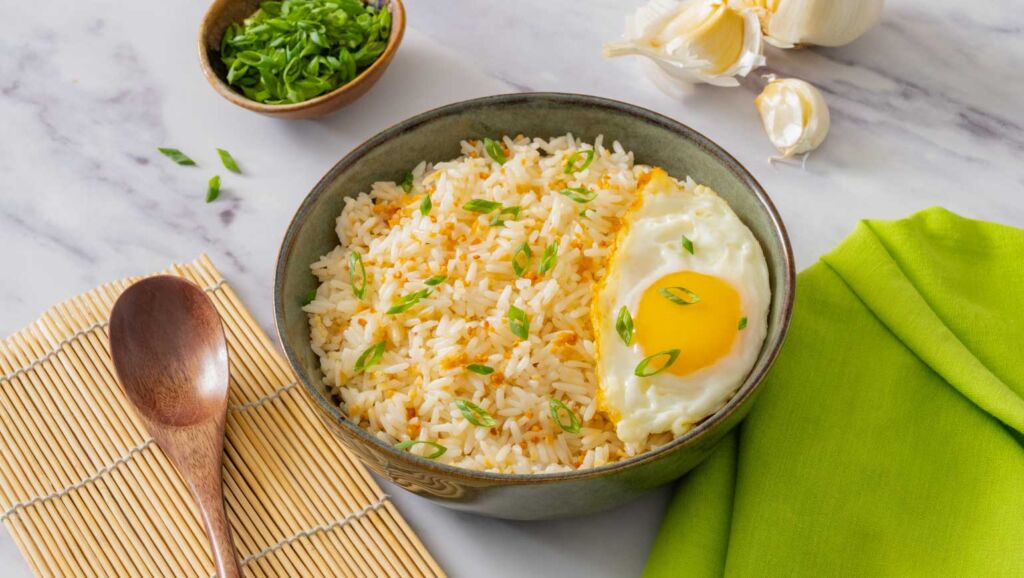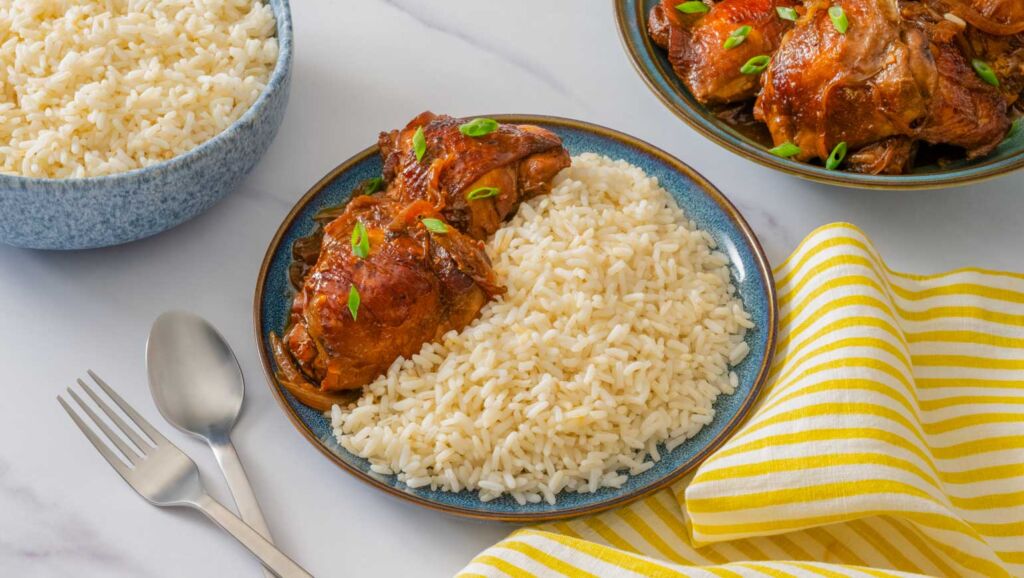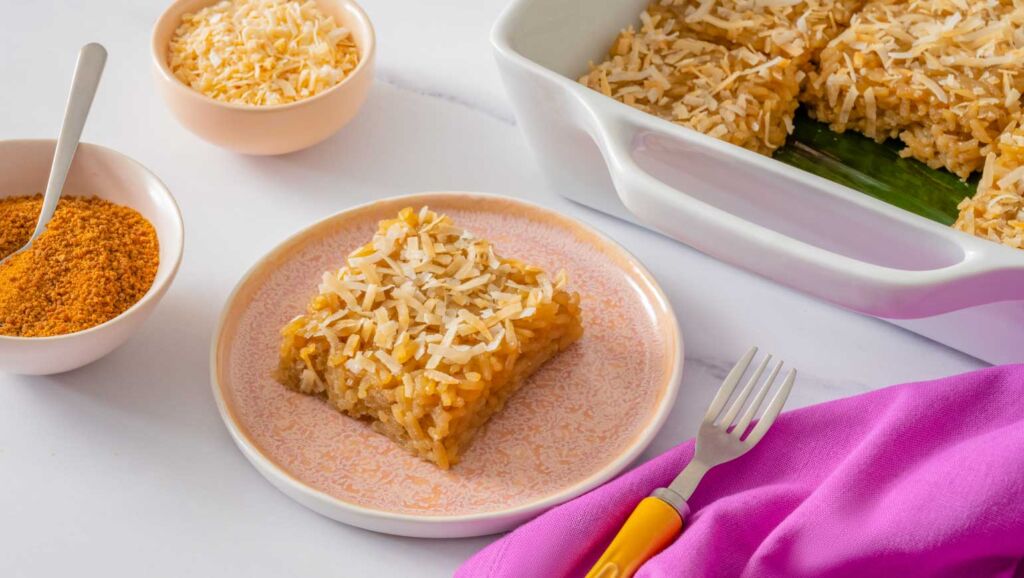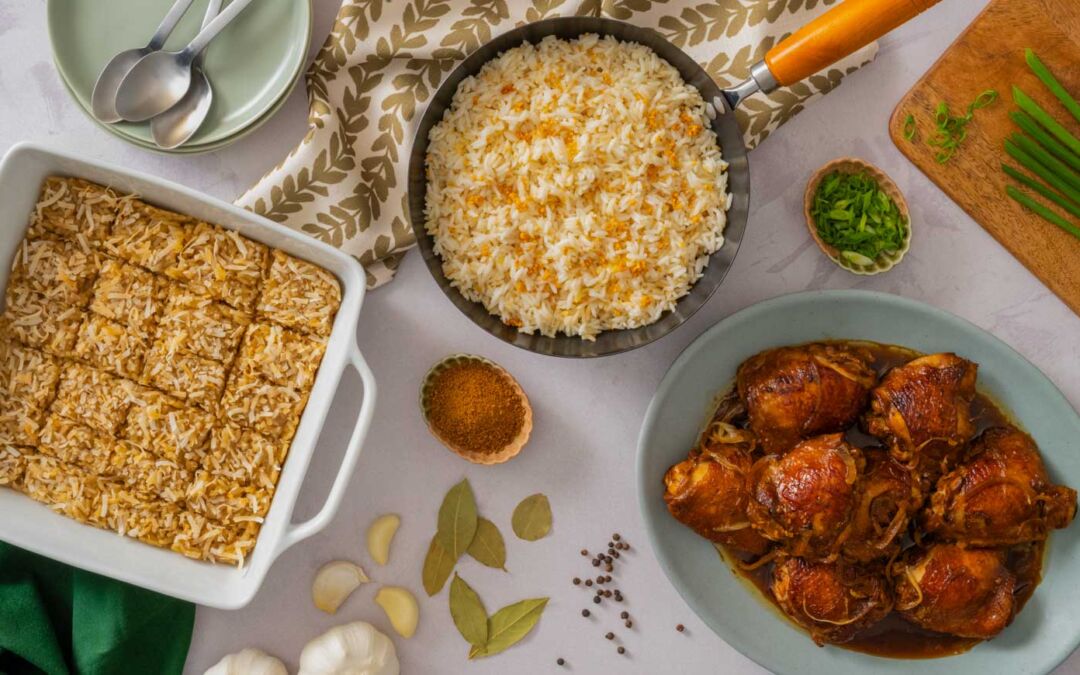Filipino rice dishes range from the simple to the assertively seasoned, from breakfast staples to main courses and gooey desserts sweetened with coconut caramel. The Southeast Asian nation is not only one of the world’s main rice producers, it is also one of the world’s largest rice importers. In fact, rice is such a mainstay of the Filipino diet, it factors into almost every meal, every single day!
Punchy, salty, sour, and sweet, Filipino food displays a vibrant medley of influences from many cuisines, including Chinese, Spanish and Indian. Due to the Southeast Asian country’s location, in the western Pacific Ocean, it is a hot, humid place where tropical fruits and vegetables, sugarcane, coffee and, of course, rice grow in abundance.
From zippy chicken adobo, the country’s national dish, to chocolatey champorado, Filipino rice dishes offer diners a diverse range of flavors. Dive into the world of Filipino food and bring one of the world’s most intriguing cuisines to your table — tonight!
What Makes Filipino Food Unique?
To understand what makes Filipino food so unique, it’s important to look at the country’s rich history. From its first indigenous inhabitants, the population of the Philippines grew due to the arrival of immigrants from China and India. Early in the 16th century, Spanish explorer Ferdinand Magellan arrived in the Philippines, and the country fell under Spanish rule. This continued for approximately 300 years, followed by a period of American colonization.
Spread across more than 7,000 islands, with a population close to 200 million, the Philippines is also diverse in its geography and peoples. Its dishes are complex and unique, often marked by regional differences and complicated backstories.
Key Ingredients in Filipino Recipes
Filipino recipes boast a world of influences, yet they’re connected by their bold flavors and usage of common ingredients. Vinegar, fish sauce, spices, citrus and herbs are all hallmarks of Filipino food. Stews, soups and pulutan, or zesty snacks, are also seasoned with aromatics, like garlic, onion, tomato and chiles and tart condiments, such as banana ketchup.
Pork, chicken and beef all feature heavily in Filipino recipes. Thanks to its location, surrounded by the ocean, the Philippines is also a spot where seafood and fish are diet mainstays.
The Role of Rice in Filipino Cuisine
From morning until night, rice is a common addition to meals in the Philippines. Unseasoned white rice is eaten so frequently, in part, because Filipino dishes tend to be heavily seasoned. Leftover rice is often repurposed as sinangag, a garlic-scented fried rice side dish.
At breakfast, rice can be found in silog, a comfort-food favorite made of sinangag, fried eggs and meat. Throughout the day, rice-based sweets, like biko and bibingka, are enjoyed with coffee or as snacks. Main meals can be simple, such as arroz caldo, or elaborate, such as family-style feasts made up of an array of savory dishes — from barbecued meats and vegetables to dried fish — accompanied by rice, noodles and a selection of invigorating condiments.
Popular Filipino Rice Dishes You Have to Try
Is your mouth watering yet? Don’t just learn about Filipino rice dishes — it’s time to get cooking! Whether you’re new to Filipino recipes or have plenty of practice with them, these are the Filipino dishes you’ll want to sample, ASAP.
Sinangag (Filipino Garlic Fried Rice)
A go-to side for a number of hearty mains, this Filipino rice dish is fragrant and delicious — and easy to whip up in less than 30 minutes! Use Success® boil-in-bag jasmine rice for a fragrant, fluffy dish perfumed with golden garlic.

Bringhe (Filipino Paella)
A dish from Luzon, bringhe is similar to paella, in that it is made with meat, rice and a mixture of vegetables. What makes this dish unique, though, is the coconut milk and glutinous rice in the recipe. Often made with chorizo and chicken, this dish can also be made with seafood and pork.
Chicken Adobo
So popular that it’s been named the national dish of the Philippines, chicken adobo is a warming stew of vinegar-braised meat paired — you guessed it! — with warm white rice. Bright and savory, thanks to white vinegar and soy sauce, this version relies on black pepper and sugar for its balanced flavor. Double the recipe and enjoy this crowd-pleaser all week long.

Pares Rice
A popular Filipino dish, this one consists of stewed beef partnered with garlic fried rice and broth. Redolent of ginger, soy and spices, the tender hunks of beef and fragrant rice make an invigorating pairing.
Bibingka (Filipino Sweet Rice Cake)
In this timeless Filipino recipe, rice flour and coconut are transformed into a popular snack cake. Traditionally cooked in banana leaves, bibingka has a distinct flavor and airy, light texture.
Biko (Filipino Sticky Rice Cake)
You’ve heard all about it, now it’s time to make this gooey good rice cake for yourself! Rich with coconut milk and brown sugar, this simple sweet makes a tempting midday snack or delightful dessert. Substitute white rice for the jasmine rice, if that’s what you have on hand.

Arroz Caldo (Filipino Rice Porridge)
A filling riff on congee, this dish is a warm, comforting cross between porridge, soup and stew. Made with chicken and rice (glutinous, white or jasmine), it’s generally flavored with garlic, fish sauce, ginger and black pepper. Popular toppings include lime wedges, scallions, crispy garlic and hard-boiled eggs.
Champorado (Chocolate Filipino Rice Porridge)
Rice pudding by another name, champorado is sweet and rich and can be eaten hot or cold, any time of day! Cocoa and evaporated milk are common in this recipe, though you can also use regular milk, cream or your favorite non-dairy alternative.
When it comes to Filipino rice dishes, there’s a world of flavors to discover! Intimidated by the extent of dishes to try? With a range of easy yet classic Filipino rice recipes at your fingertips, you can go sweet or savory, simple or complex with sides, sweets and mains that bring the flavors of the Philippines to your home. Armed with Success® Rice, discover the breadth of Filipino rice dishes and savor one of the world’s most complex cuisines!

